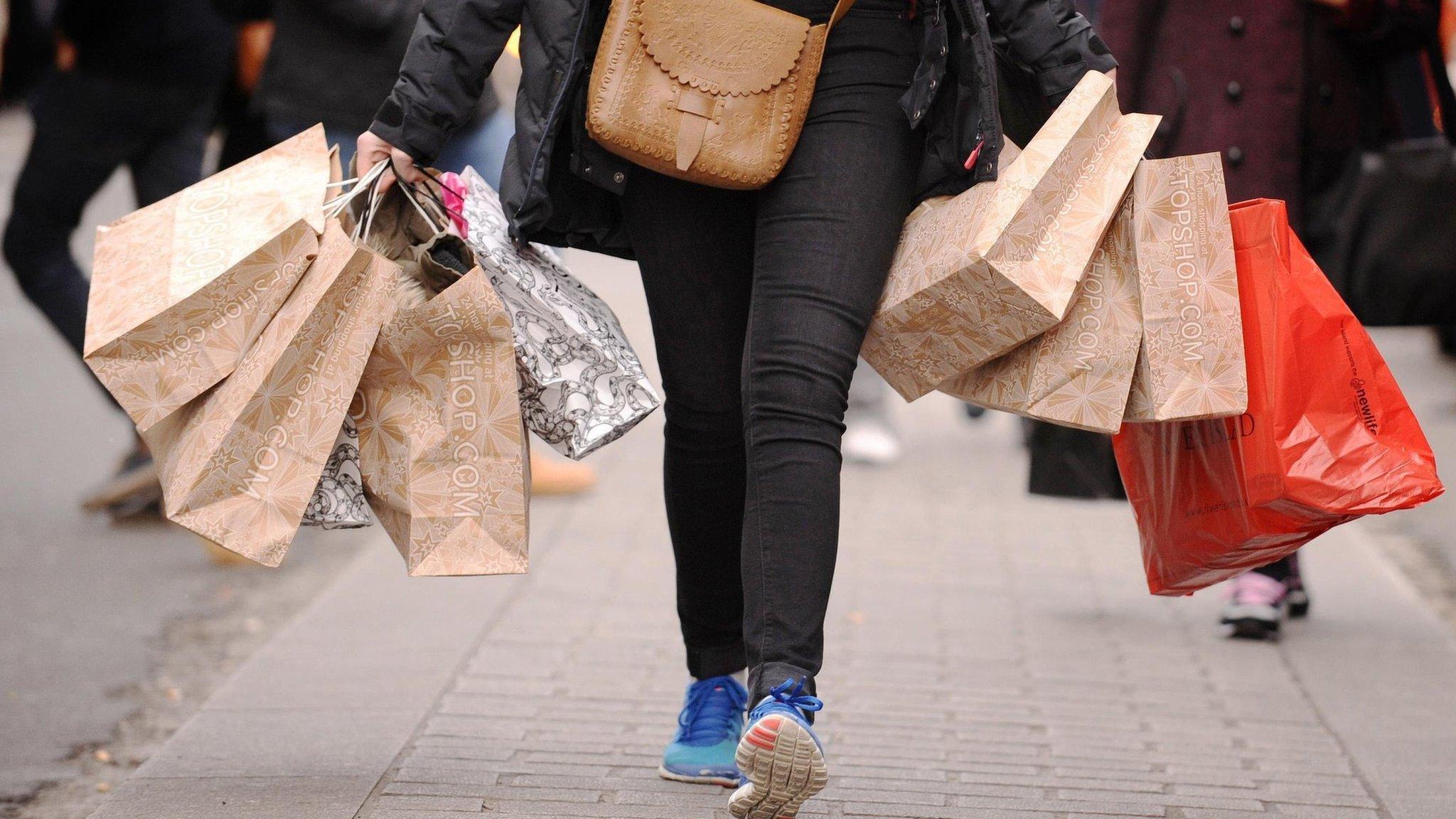Coronavirus: Can London’s suburbs lead the capital’s economic recovery?
- Published
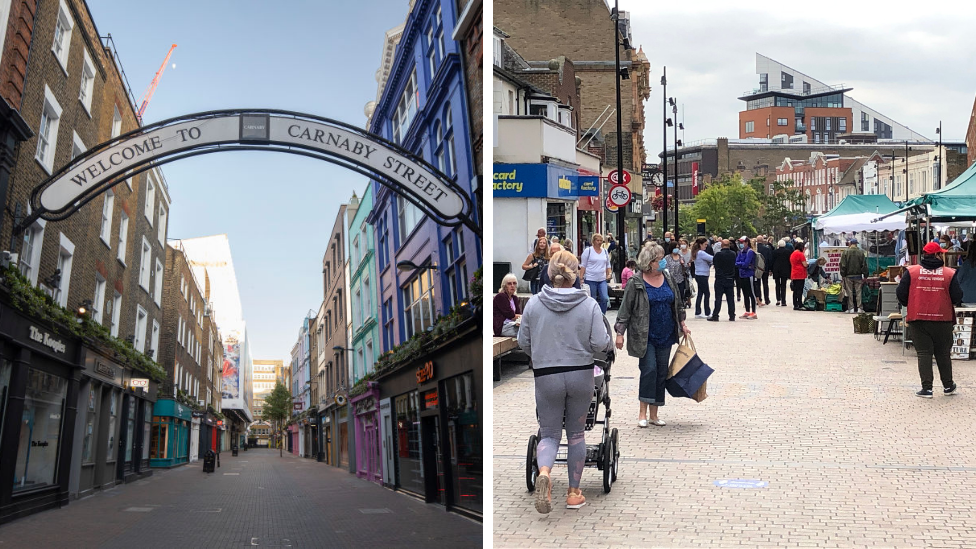
During lockdown shoppers have traded central London for suburban high streets
The UK economy has suffered its biggest slump on record and remains in recession. Central London's world-famous shopping district sits largely empty with no prospect of returning to normal soon. But can green shoots of a recovery be seen on suburban high streets in other parts of the capital?
London was the epicentre of the UK's coronavirus outbreak at the start of the pandemic.
While the prevalence of the virus is now lower in London than other regions there has been evidence economic recovery in the capital has lagged behind the rest of the country.
There were 2.5 times more unemployment benefit claimants in London as of June than at the beginning of the year - steeper than the 2.1 times increase seen on average across the rest of the country.
This week the Centre for Economics and Business Research said central London had missed out on £2.3bn of spending while people worked from home.
Centre for Cities national high streets recovery tracker, external puts London at the bottom of the footfall league table.
And with the spectre of a second wave of Covid-19 hovering over the UK, large retailers have been shutting stores.
But hidden beneath this series of negative trends is evidence of a suburban recovery.
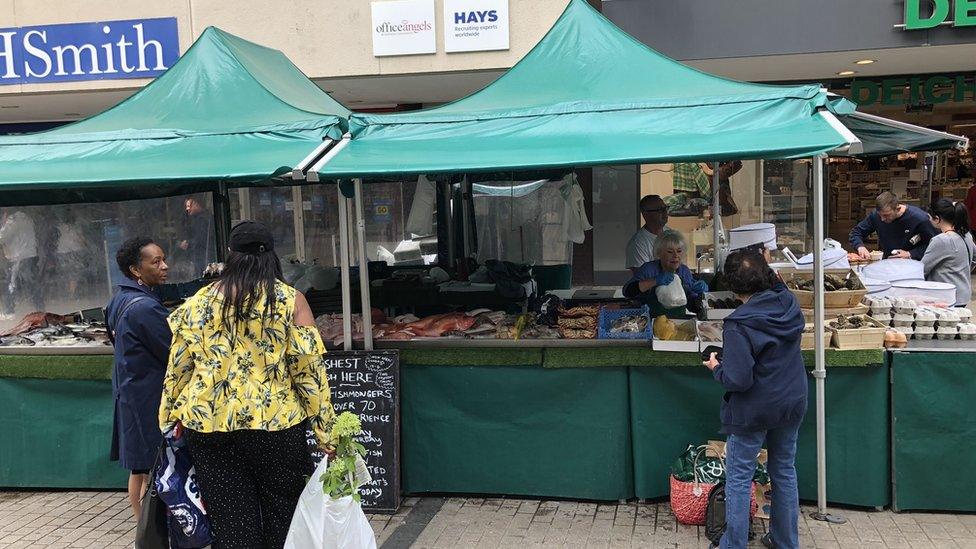
Paul Rosenfeld runs a fishmongers on Bromley market with his mother
"This is the busiest place I know," said David Wells, who runs a fabric stall on Bromley High Street in south-east London.
Mr Wells has traded in the area for 28 years. He said sales have gone "back to the old days".
"I think my profits are going to be up on last year."
On the edge of London's border with Kent, Bromley has come to life as many of its 330,000 residents have stayed closer to home.
In the centre of the borough a pedestrianised street hosts traditional market stalls and independent shops alongside large high street retailers.
Shops and restaurants gradually reopened from 1 June after being ordered shut at the start of lockdown in March.
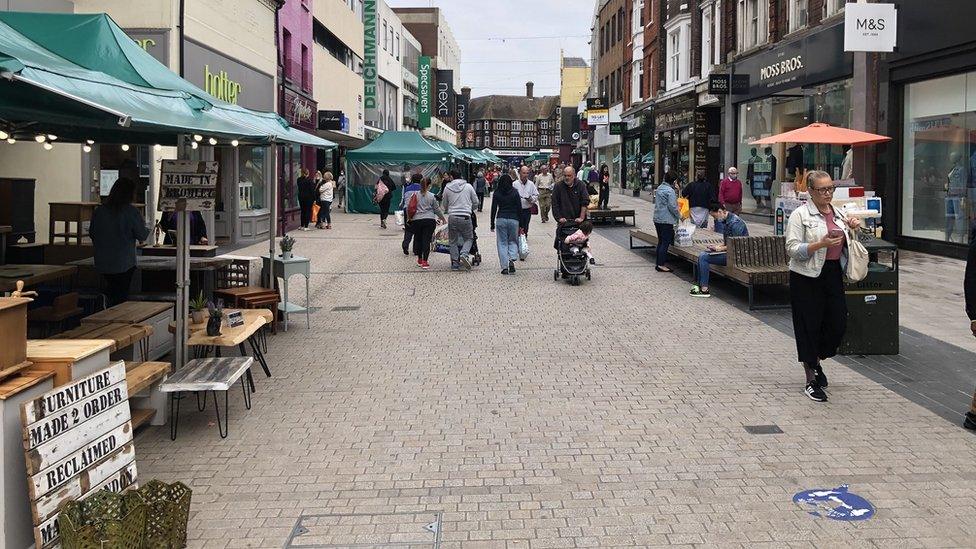
Central Bromley has a large retail area, including a pedestrianised High Street
"No one knows what's happening anymore so everyone thinks it's got to be safer outside than inside," Mr Wells said.
"As soon as we came back from lockdown people were back out and buying £100 worth of fabric a go.
"They're making their own masks but people are stuck at home, they're picking up their hobbies again."
Along the high street, fishmonger Paul Rosenfeld has seen a flood of new customers.
"I actually think it's better than it's been in a long time," he said.
People have been "rediscovering cooking at home" and wanted fresher ingredients, said Mr Rosenfeld, who collects his produce every morning from Billingsgate Market before dawn.
New customers have also come to the stall, which Mr Rosenfeld runs with his mother, asking for cooking tips and new recipe ideas.
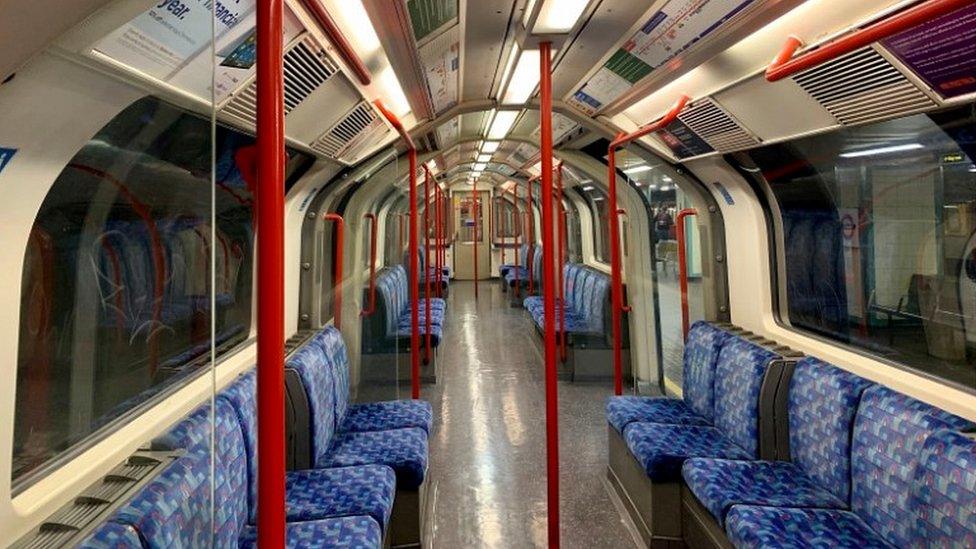
With fewer people commuting into central London the Underground is running much emptier
Suburban areas appear to be benefiting from people's desire to meet and shop closer to home.
A Centre for London report, external showed while card transactions in central London shops have dropped 60% since January, spending had shifted to smaller town centres. East Ham, home to a famous east London market, saw grocery spending increase 16% throughout the pandemic.
The strongest performing high street was Southall in west London, sometimes known as Little India.
A 50-year reputation as one of the UK's premier Asian towns has made the area a destination for shoppers wanting to buy traditional Indian food, jewellery and clothing.
Clothes shopping has remained stable but spending on food has increased by a quarter since the lockdown, according to the Centre for London.

Chaudhry's TKC claims to be the oldest still operating business in Southall
Shopfronts and market stalls spill out on to Southall's long high-street, which winds through a built-up part of Ealing.
More than a few empty shops have started popping up in lockdown.
"No matter what happens Southall will keep standing," says Dilawar Chaudhry, owner of restaurant Chaudhry's TKC, which was founded in 1965.
It has been the "bargaining culture of India and the Middle East that has made Southall sustainable", Mr Chaudhry said.
"What's going to happen now is the resilience and fabric of the community will save us," he said.
"The persistence and the dedication of the traders, and the crowds coming here to get a good deal, will keep the economy going."
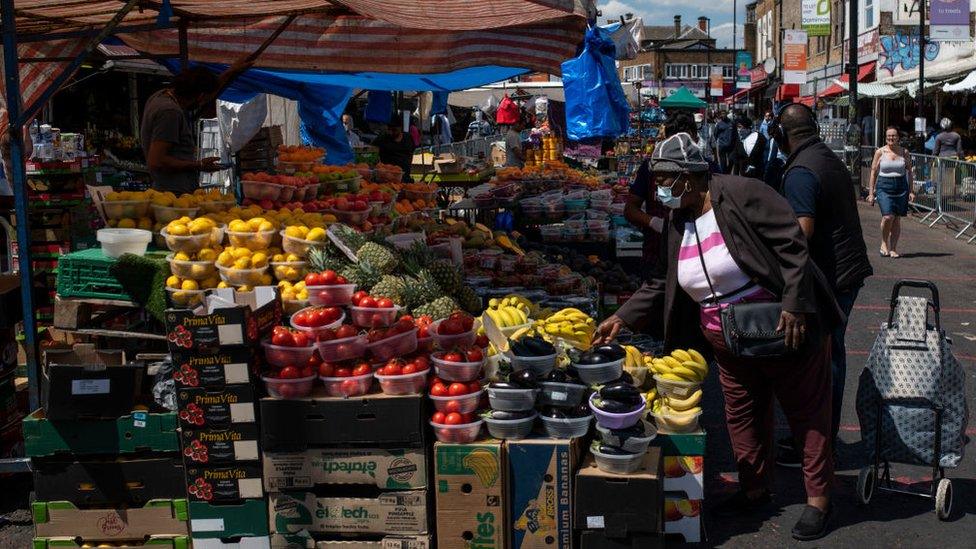
The High Street Task Force found places with outdoor shopping and pedestrianised streets have had more footfall since lockdown
According to Dr Maria Loroño-Leturiondo, an expert in high street spending: "People who feel part of a community are more likely to want to preserve the area they live in, and so are more likely to invest."
Dr Loroño-Leturiondo, who works on the government commissioned High Street taskforce, said suburban high streets "offer more than just retail".
"The shopping is more attuned to the local constituency needs but you can go there for leisure, enjoyment, employment.
"People are also valuing natural assets smaller towns provide, such as green spaces and beaches, more than before."
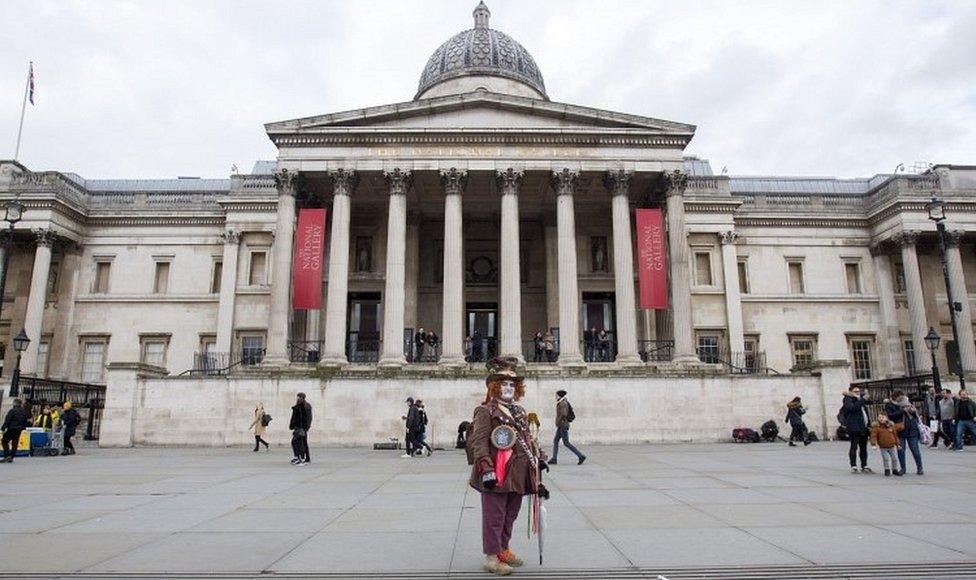
The capital's tourist trade has been particularly hit by the pandemic
About 10 miles away, in central London, the scene turns bleak.
Inner London is famed for its restaurants, bars and hotels. But without tourists and office workers, shops in the heart of London have seen steep economic losses.
"We're being whacked," says Robin Smith, chair of Berwick Street Traders Society.
"It's like a bomb went off and left all the buildings standing," he said.
Mr Smith, who owns several businesses in Soho, has run a stall in Berwick Market for 30 years.
"We're doing three times as much work as we've ever done before but sales are down 80-90%," he said.
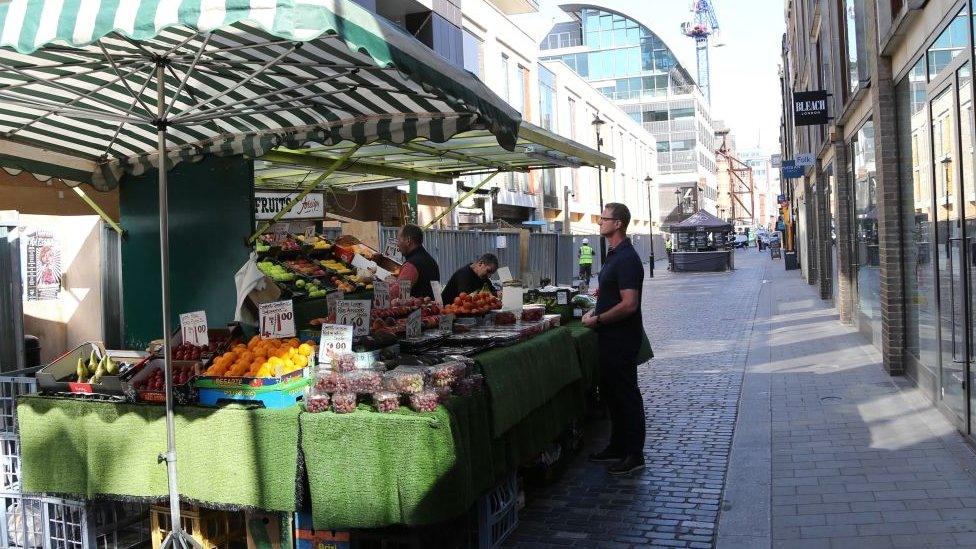
Berwick Street market, a fixture in London since the 1778, has seen a massive drop in trade
Foot traffic in central London was down 62% at the end of August compared with pre-lockdown levels, according to Springboard.
After urging people to return to their workplaces last month the government this week again advised people in England to work from home "if they can".
If working from home becomes the new normal, a drop in footfall through central London could be permanent.
Mark Kleinman, Professor of Public Policy at Kings College London, said: "The impact of the pandemic has been to accelerate some social and economic changes - such as remote working and online retail - that were already under way."
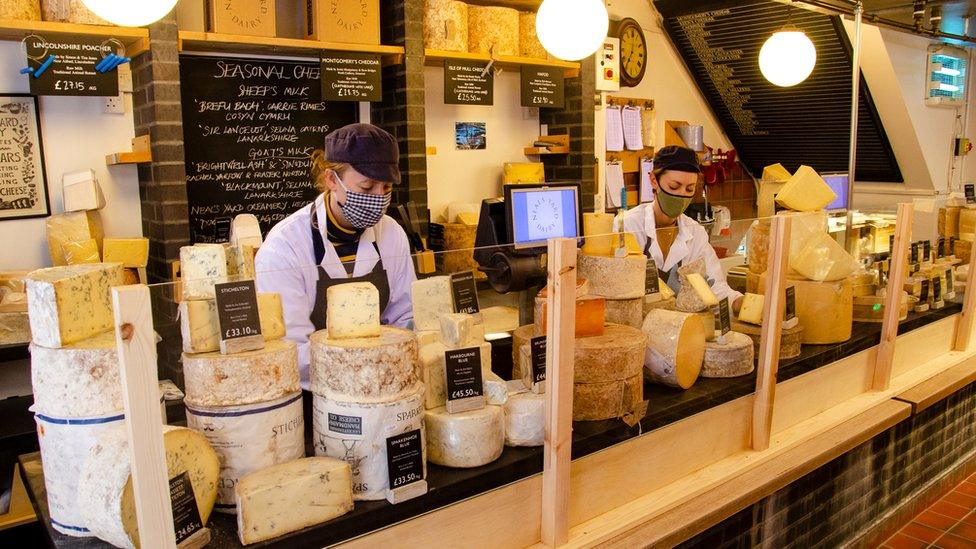
Neal's Yard Dairy normally see a threefold increase in sales over Christmas, according to David Lockwood
That could be a problem for Neal's Yard Dairy.
"In Covent Garden, it just turned into a ghost town, tumbleweeds were blowing down the street," said David Lockwood, director of the well-known cheesemongers.
The company's Covent Garden shop would normally sell close to 275kg (600lb) of cheese a week. This August it sold, on average, 90kg (200lbs) a week.
Mr Lockwood said he was already concerned about Christmas, when the company would normally achieve about 10% of its annual in-store sales.
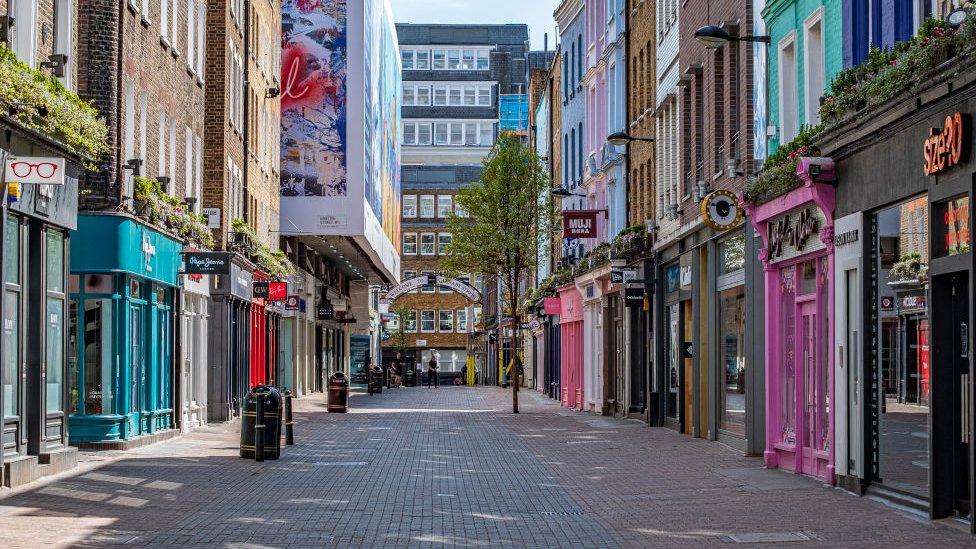
Carnaby Street would normally be bustling in London
Even in the high street areas showing signs of recovery, there is a sense the upturn is fragile and shop owners admit they are feeling nervous about what the future holds.
After a period of relative stability, this week new national restrictions were put in place as the number of confirmed cases of coronavirus began to rise.
How the capital recovers is likely to depend on how it reacts to the next series of challenges.
Mr Lockwood has begun hiring seasonal staff at Neal's Yard Dairies, ahead of a hoped-for Christmas rush of sorts, but said he was trying to delay major decisions until the future became clearer.
"We could be wrong but we're making the best decisions in the moment. It's our best guess right now."
- Published26 August 2020
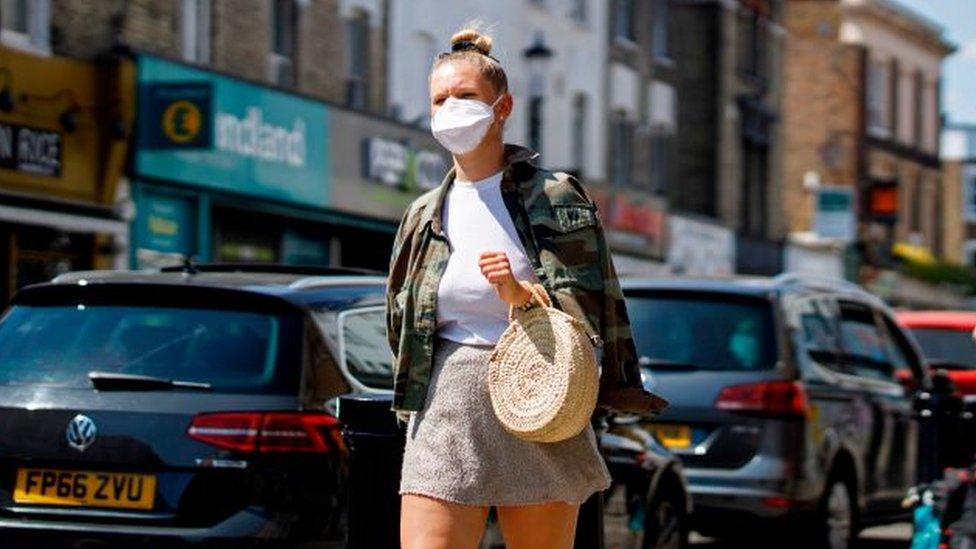
- Published10 May 2024
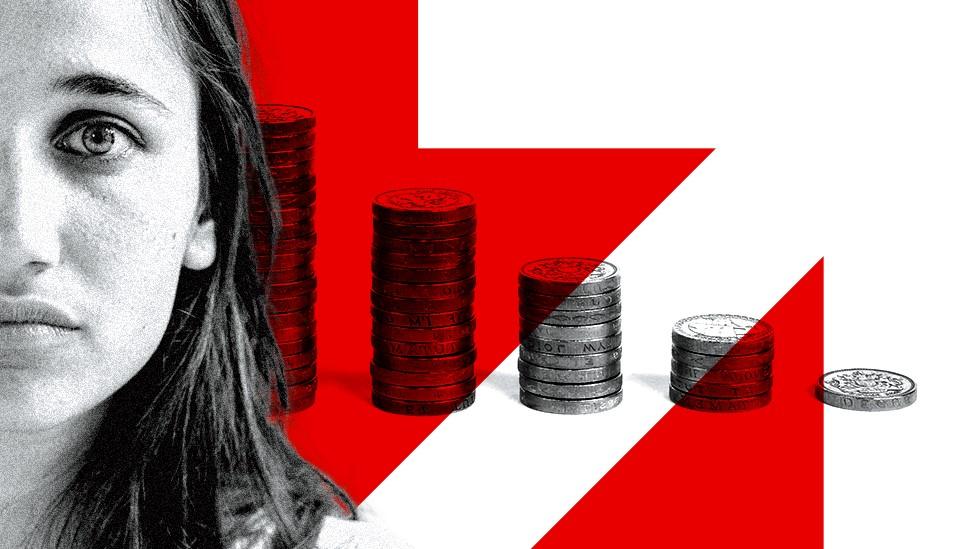
- Published14 June 2020
